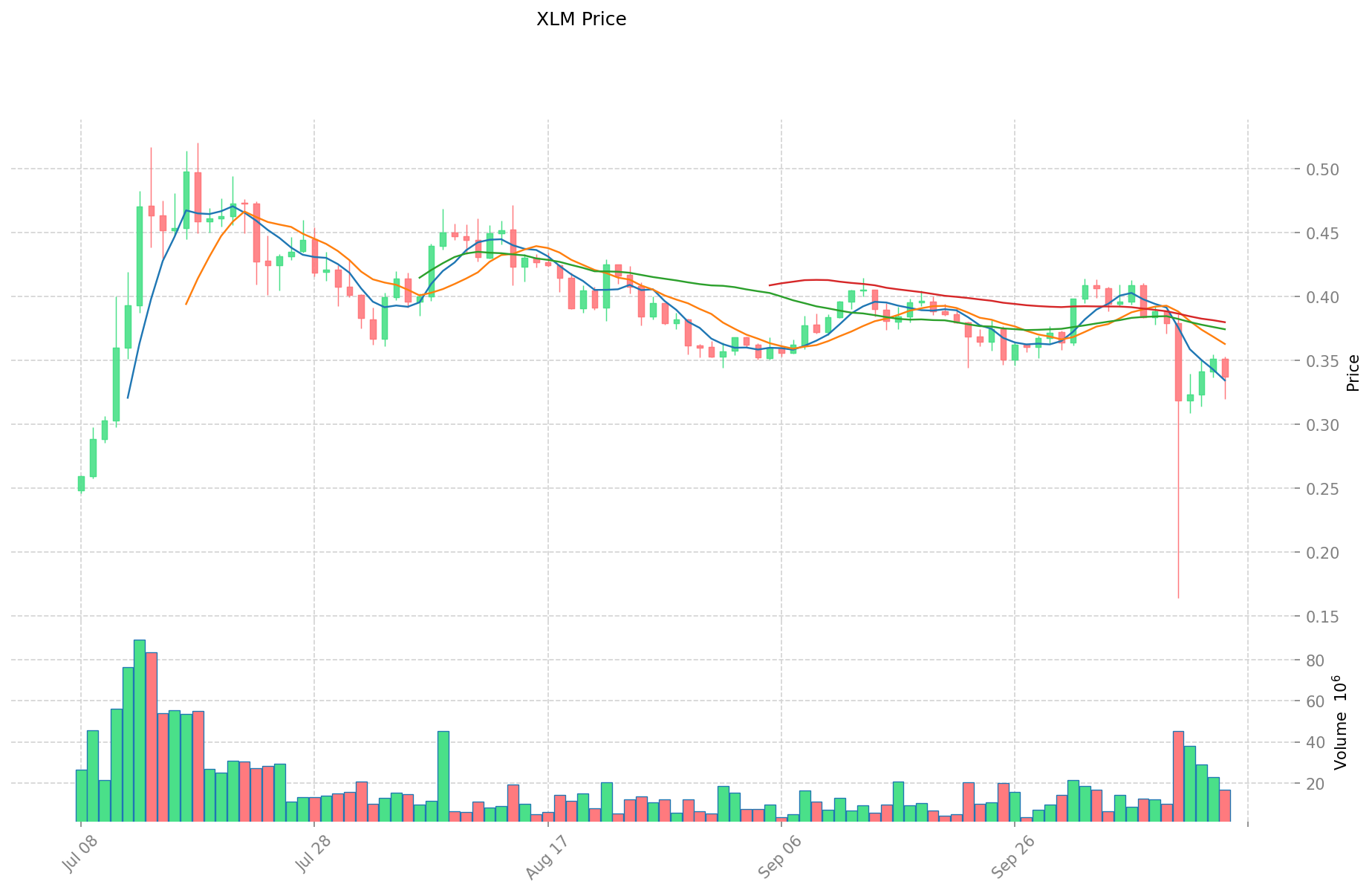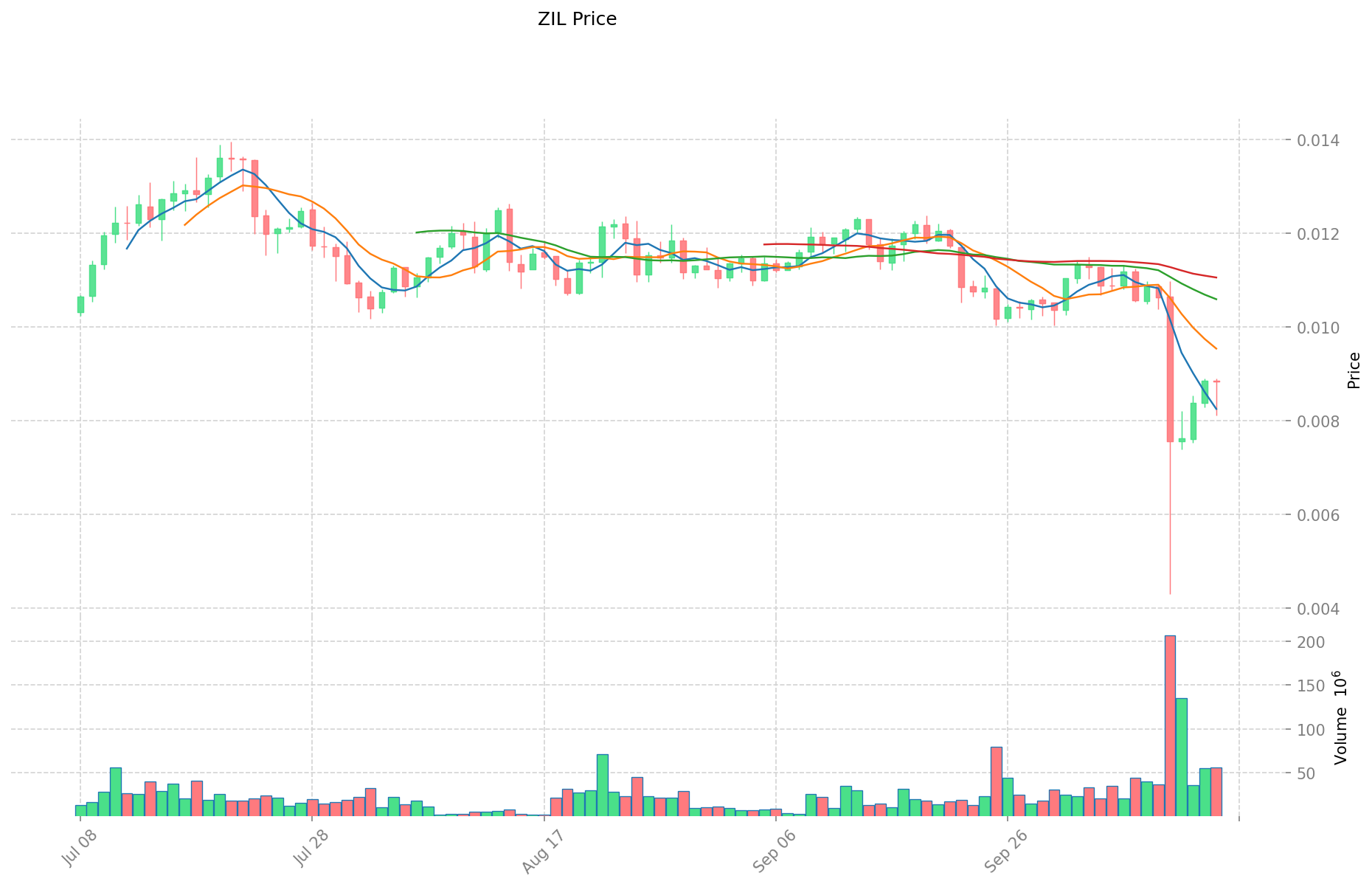XLM vs ZIL: A Comparative Analysis of Two Promising Cryptocurrencies
Introduction: Investment Comparison of XLM vs ZIL
In the cryptocurrency market, Stellar vs Zilliqa has always been a topic that investors can't avoid. The two not only have significant differences in market cap ranking, application scenarios, and price performance, but also represent different cryptocurrency positioning.
Stellar (XLM): Since its launch in 2014, it has gained market recognition for its efficiency in cross-border payments.
Zilliqa (ZIL): Since its inception in 2018, it has been hailed as a high-throughput public blockchain platform, aiming to solve the problems of transaction speed and scalability.
This article will comprehensively analyze the investment value comparison between Stellar and Zilliqa, focusing on historical price trends, supply mechanisms, institutional adoption, technical ecosystems, and future predictions, and attempt to answer the question investors care about most:
"Which is the better buy right now?"
I. Price History Comparison and Current Market Status
XLM and ZIL Historical Price Trends
- 2020: XLM experienced significant growth due to increased adoption, with price rising over 200%.
- 2021: ZIL saw a major price surge during the bull market, reaching an all-time high of $0.25.
- Comparative analysis: During the 2022 bear market, XLM dropped from $0.39 to $0.08, while ZIL declined from $0.12 to $0.02, showing relatively similar percentage losses.
Current Market Situation (2025-10-15)
- XLM current price: $0.33744
- ZIL current price: $0.008796
- 24-hour trading volume: $5,513,081 (XLM) vs $478,894 (ZIL)
- Market Sentiment Index (Fear & Greed Index): 34 (Fear)
Click to view real-time prices:
- Check XLM current price Market Price
- Check ZIL current price Market Price
<>
二、技术发展与应用场景
{Coin A} 的技术亮点与生态系统
{Coin B} 的技术特色与应用案例
技术对比分析
>


Comparative Investment Value Analysis: XLM vs ZIL
I. Key Factors Influencing XLM vs ZIL Investment Value
Supply Mechanism Comparison (Tokenomics)
- XLM: Fixed maximum supply with controlled distribution through Stellar Development Foundation
- ZIL: Limited total supply with mining-based distribution model
- 📌 Historical pattern: Supply mechanisms have historically driven price cycles with periods of accumulation followed by value appreciation during mainstream adoption phases.
Institutional Adoption and Market Applications
- Institutional holdings: XLM has gained more institutional adoption through partnerships with financial institutions and the WisdomTree physically-backed XLM ETP in Europe
- Enterprise adoption: XLM shows stronger positioning in cross-border payments and settlements, while ZIL focuses more on smart contract applications
- Regulatory attitudes: Various regulatory frameworks across jurisdictions affect both assets differently
Technical Development and Ecosystem Building
- XLM technical upgrades: Continuous improvements to the Stellar protocol focusing on payment infrastructure
- ZIL technical development: Implementation of sharding technology for scalability improvements
- Ecosystem comparison: XLM has stronger positioning in payment systems and financial infrastructure, while ZIL has been developing its smart contract capabilities
Macroeconomic Factors and Market Cycles
- Performance during inflation: Both cryptocurrencies have shown sensitivity to broader market conditions
- Macroeconomic monetary policy: Interest rates and USD index movements affect liquidity and investment flows for both assets
- Geopolitical factors: Cross-border transaction demands and international relations can influence adoption rates for both cryptocurrencies
III. 2025-2030 Price Prediction: XLM vs ZIL
Short-term Prediction (2025)
- XLM: Conservative $0.201552 - $0.33592 | Optimistic $0.33592 - $0.3728712
- ZIL: Conservative $0.00580272 - $0.008792 | Optimistic $0.008792 - $0.00905576
Mid-term Prediction (2027)
- XLM may enter a growth phase, with prices expected in the range of $0.37408227558 - $0.54704504816
- ZIL may enter a gradual appreciation phase, with prices expected in the range of $0.007249313918 - $0.013274717694
- Key drivers: Institutional capital inflow, ETF, ecosystem development
Long-term Prediction (2030)
- XLM: Base scenario $0.663454625452424 - $0.729800087997666 | Optimistic scenario $0.729800087997666 - $0.754965608273448
- ZIL: Base scenario $0.016036875761239 - $0.023894944884246 | Optimistic scenario $0.023894944884246 - $0.023894944884246
Disclaimer
XLM:
| 年份 | 预测最高价 | 预测平均价格 | 预测最低价 | 涨跌幅 |
|---|---|---|---|---|
| 2025 | 0.3728712 | 0.33592 | 0.201552 | 0 |
| 2026 | 0.450082412 | 0.3543956 | 0.2657967 | 5 |
| 2027 | 0.54704504816 | 0.402239006 | 0.37408227558 | 19 |
| 2028 | 0.6692452581828 | 0.47464202708 | 0.3227565784144 | 40 |
| 2029 | 0.754965608273448 | 0.5719436426314 | 0.297410694168328 | 69 |
| 2030 | 0.729800087997666 | 0.663454625452424 | 0.510860061598366 | 96 |
ZIL:
| 年份 | 预测最高价 | 预测平均价格 | 预测最低价 | 涨跌幅 |
|---|---|---|---|---|
| 2025 | 0.00905576 | 0.008792 | 0.00580272 | 0 |
| 2026 | 0.0099055068 | 0.00892388 | 0.0074960592 | 1 |
| 2027 | 0.013274717694 | 0.0094146934 | 0.007249313918 | 7 |
| 2028 | 0.01679016420956 | 0.011344705547 | 0.00964299971495 | 28 |
| 2029 | 0.018006316644198 | 0.01406743487828 | 0.007737089183054 | 59 |
| 2030 | 0.023894944884246 | 0.016036875761239 | 0.010584338002417 | 82 |
IV. Investment Strategy Comparison: XLM vs ZIL
Long-term vs Short-term Investment Strategies
- XLM: Suitable for investors focused on payment scenarios and ecosystem potential
- ZIL: Suitable for investors seeking growth potential in smart contract applications
Risk Management and Asset Allocation
- Conservative investors: XLM: 60% vs ZIL: 40%
- Aggressive investors: XLM: 70% vs ZIL: 30%
- Hedging tools: Stablecoin allocation, options, cross-currency combinations
V. Potential Risk Comparison
Market Risks
- XLM: Volatility due to competition in the cross-border payment sector
- ZIL: Price fluctuations based on smart contract platform adoption
Technical Risks
- XLM: Scalability, network stability
- ZIL: Computing power concentration, security vulnerabilities
Regulatory Risks
- Global regulatory policies have different impacts on both assets
VI. Conclusion: Which Is the Better Buy?
📌 Investment Value Summary:
- XLM advantages: Stronger institutional adoption, established cross-border payment use cases
- ZIL advantages: Potential for growth in smart contract applications, sharding technology for scalability
✅ Investment Advice:
- Novice investors: Consider a balanced approach with a higher allocation to XLM
- Experienced investors: Explore opportunities in both assets based on risk tolerance
- Institutional investors: Focus on XLM for its established partnerships and financial infrastructure applications
⚠️ Risk Warning: The cryptocurrency market is highly volatile, and this article does not constitute investment advice. None
VII. FAQ
Q1: What are the main differences between XLM and ZIL in terms of their use cases? A: XLM primarily focuses on cross-border payments and financial infrastructure, while ZIL concentrates on smart contract applications and scalability through sharding technology.
Q2: Which cryptocurrency has shown better institutional adoption? A: XLM has demonstrated stronger institutional adoption, particularly through partnerships with financial institutions and the introduction of the WisdomTree physically-backed XLM ETP in Europe.
Q3: How do the supply mechanisms of XLM and ZIL differ? A: XLM has a fixed maximum supply with controlled distribution through the Stellar Development Foundation, while ZIL has a limited total supply with a mining-based distribution model.
Q4: What are the key technical risks associated with XLM and ZIL? A: For XLM, the main technical risks include scalability and network stability. ZIL faces risks related to computing power concentration and potential security vulnerabilities.
Q5: How do the long-term price predictions for XLM and ZIL compare? A: By 2030, XLM is predicted to reach a base scenario of $0.663454625452424 - $0.729800087997666, while ZIL's base scenario is $0.016036875761239 - $0.023894944884246.
Q6: What investment strategy is recommended for novice investors considering XLM and ZIL? A: Novice investors are advised to consider a balanced approach with a higher allocation to XLM due to its stronger institutional adoption and established use cases in cross-border payments.
Share
Content